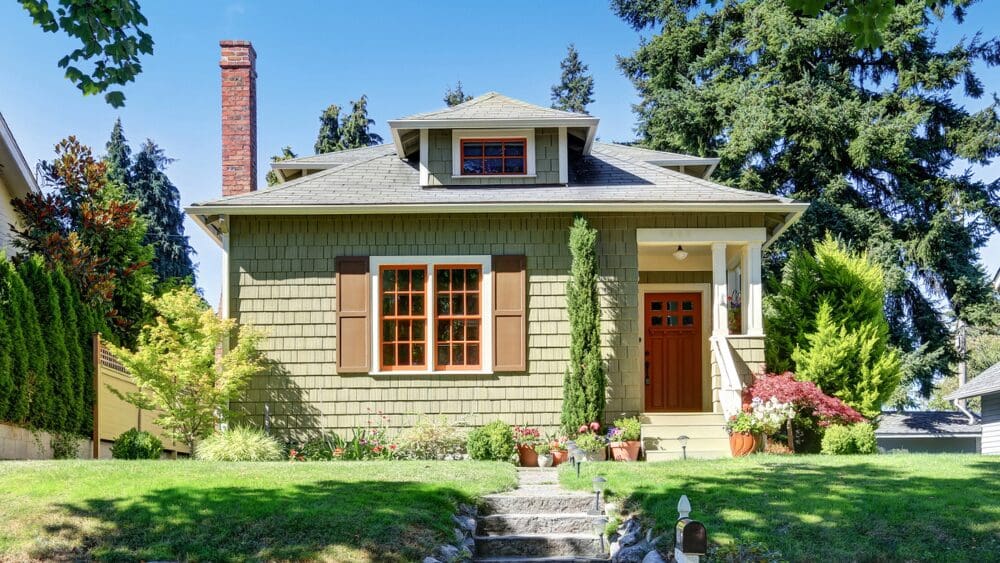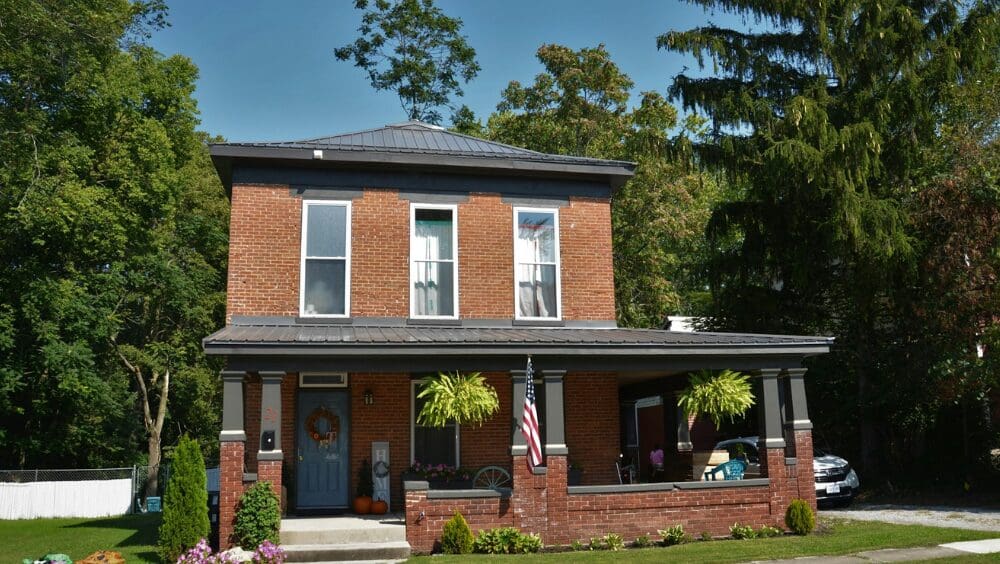
Click on a news site recently and you’ll see blaring headlines — Largest rate hike in decades! Mortgage rates rise! If you’ve been thinking of buying soon, or were trying to wait out the seller’s market during the pandemic, you might be feeling a little frustrated. Did you really wait for prices to normalize only to pay more for your mortgage? Before panicking, it’s helpful to examine today’s mortgage rates with their historical context. Jerome Leyba is an experienced agent in Santa Fe, New Mexico, who sells homes 32% faster than other agents in his area. He explains that there’s a natural ebb and flow to the market, “Interest rates go up, the market slows, they go down a little bit, and the market speeds back up.” Learning what impacts rates, and the broader economic factors that make them go up or down, will help you feel more in control. And, you may find that things aren’t as bad as those headlines would like you to think. The Federal Reserve, inflation, and recessions have caused mortgage rate fluctuations throughout history — but how? Think of each of these factors as pieces of a puzzle that, when combined, give some context of the average mortgage rate of a particular time period. The Federal Reserve controls the country’s monetary policy. The primary goals of this government entity are to maintain stable prices and employment, and to set long-term interest rates. The Fed determines the rate at which banks will lend money to each other through setting what is called the federal funds rate. Maintaining stable prices means combating excessive inflation — the Fed will raise the federal funds rate to reduce the rate of inflation, and these higher rates are then passed onto consumers. Inflation occurs when prices rise and your dollar doesn’t go as far — i.e. the grocery cart that cost $100 two weeks ago now costs $120, but you still only have $100 to budget for groceries. In response to growing inflation, interest rates rise across the economy to discourage unnecessary consumer spending. Demand for mortgage-backed securities drops, further causing rates to rise. Investors looking for low-risk but a return on their investments often find what they’re looking for in the bond market. Bonds are debt securities issued by either the government or corporations and sold to investors. Banks, and government-sponsored enterprises Freddie Mac and Fannie Mae, often “bundle” mortgages together in mortgage-backed securities or “MBS.” They then sell these securities to the same investors that invest in the bond market, but they have to pay investors higher rates. There’s more risk to a MBS — if consumers default on the underlying loans and foreclosures rise, the security’s value declines. A higher rate of return incentivizes investors to assume that risk. The National Bureau of Economic Research states that a recession is defined by, “a significant decline in economic activity that is spread across the economy and lasts more than a few months.” Related to this, unemployment often rises during a recession, which decreases demand for mortgages. If you’re in the position to buy a home, that could be a good thing. Interest rates fall due to less demand. And, sadly, sellers facing foreclosure due to unemployment are often more motivated to sell. All of the above factors contribute to what people generally call “the economy.” If the country is in a recession, if the unemployment rate is rising, and inflation is up, pundits will say that the economy isn’t doing well. Whether or not the economy is “doing well” directly impacts mortgage rates, as we can see when looking at past decades. Was it cheaper for your parents or grandparents to buy a house? Looking back through the decades, mortgage rates have fluctuated over time. The difference in mortgage rates between buying a home in the 1970s versus buying in the 1950s could literally be thousands — if not hundreds of thousands — of dollars over the life of the mortgage loan. Here’s what you might have paid for a mortgage in past decades (and why) with data from Freddie Mac. At the beginning of the decade, homeowners paid mortgage interest rates of around 7.38% to buy a home, but by the decade’s end, the rate had jumped to 11.20%! What caused the change? The oil embargo in 1973 led to rapid inflation, which collided with layoffs and wage stagnation to cause what economists call “stagflation.” The result? Mortgage rates that reflected lender’s risk. In an attempt to curb inflation that continued from the 1970s into the 1980s, the Federal Reserve adopted a tight monetary policy at the beginning of this decade. Mortgage rates climbed higher after the Iran crisis in the late ‘70s and high unemployment rates contributed to bank’s reluctance to lend. Potential homeowners could finally breathe a sigh of relief in the ‘90s. The country entered into a peaceful period after the Vietnam War of the 1970s, the Iran crisis, and the Gulf War of the 1990s. Inflation rates fell from over 5% to around 2% over the decade. Mortgage rates spiked again at the beginning of the 2000s before falling to a rate not seen since Freddie Mac began tracking them. The 2008 financial crisis, caused by low interest rates, subprime mortgages, and inadequate regulation, spurred the Federal Reserve to temporarily cut the Fed Funds Rate to zero. By the end of the decade, as the country recovered from the crisis, they rose again. It took more than a few years to recover, however. Demand for housing remained low during the 2010s, and continued declining. At the beginning of 2010, 69.1% of all Americans owned a home. That dipped as low as 62.9% in 2016, before ending the decade at 65.1%. Lower demand kept mortgage rates low as lenders tried to entice buyers into the market. Rates fell even lower in 2020 with the arrival of the COVID-19 pandemic. Leyba says that lower interest rates gave people incentives to purchase, “putting them in positions where initially, with interest rates before, they were unable to buy at specific price points, now they had flexibility and opportunity.” The Federal Reserve kept interest rates low and also tried to stimulate demand by purchasing mortgage-backed securities. Banks, reassured that they could bundle their mortgages and sell them to the Fed, kept lending. Despite these efforts, inflation has risen sharply in 2022, aggravated by both supply-chain issues and the conflict in the Ukraine. It’s led, indirectly, to a recent rise in mortgage rates. While local markets vary, in general the housing market has slowed in 2022. According to the Mortgage Bankers Association, at the end of June, mortgage applications had their biggest slump in 22 years. A slowdown in the demand for mortgages would typically lead to lower rates, but the country is also battling rapid inflation. Some experts believe we’re on the verge of recession after two quarters of declines in GDP. If the country goes into a recession, the Fed could lower rates to spark demand. With the current increase in rates, Leyba has seen his local market shift. “Right now probably about 38% to 40% of our clients are priced out of their current purchase price due to inflation,” he estimates. “We’re seeing the biggest challenge is that with interest rates increasing and prices of homes increasing, it makes it far more challenging to fit a first-time homebuyer.” However, the economy is still adding jobs, companies are showing earnings growth, and consumer spending increased in June. It’s hard to tell if rates will rise, and timing the market is difficult. Unlike the frenzy of the beginning of the pandemic, Leyba thinks the market is more normalized now. The decrease in mortgage loan applications indicates a slow down, too. Existing home sales fell 5.9% in July 2022, the sixth month in a row showing a decline. Since market conditions vary by city, state, and town, it’s always a good idea to speak to an expert agent in your area to get a feel for the local market. If you’re looking to buy soon, here are some tips. With the market cooling, sellers can no longer expect multiple offers and bidding wars. While there’s still competition for houses, buyers are able to take more time to think through their decision. If you’ve been debating selling, you might want to list now before home prices drop more. In the historical ebb and flow of interest rates and home prices, we’ve just seen a surge. The tide came in high, with high prices and low rates. But now, it may be heading back out. If you’re concerned about how recent mortgage rate increases could impact your buying or selling experience, talk to an agent today.What causes mortgage rate fluctuations?
Federal Reserve
Inflation
Bond Market
Recessions
The Economy
Historical Mortgage Rate Trends
Mortgage Rates in the 1970s – average rates of 7.38% to 11.20%
Mortgage rates in the 1980s – average rates of 13.74% to 10.32%
Mortgage rates in the 1990s – average rates of 10.13% to 7.44%
Mortgage rates in the 2000s – average rates of 8.05% to 5.04%
Mortgage rates in the 2010s – average rates of 4.69% to 3.94%
Current mortgage rate trends (2020-2022) – average rates of 3.11% to 4.65%
Right now probably about 38% to 40% of our clients are priced out of their current purchase price due to inflation. We’re seeing the biggest challenge is that with interest rates increasing and prices of homes increasing, it makes it far more challenging to fit a first-time homebuyer.
Will rates continue to rise? (2022 – beyond predictions)
Is now a good time to buy a home?
Is now a good time to sell a home?



